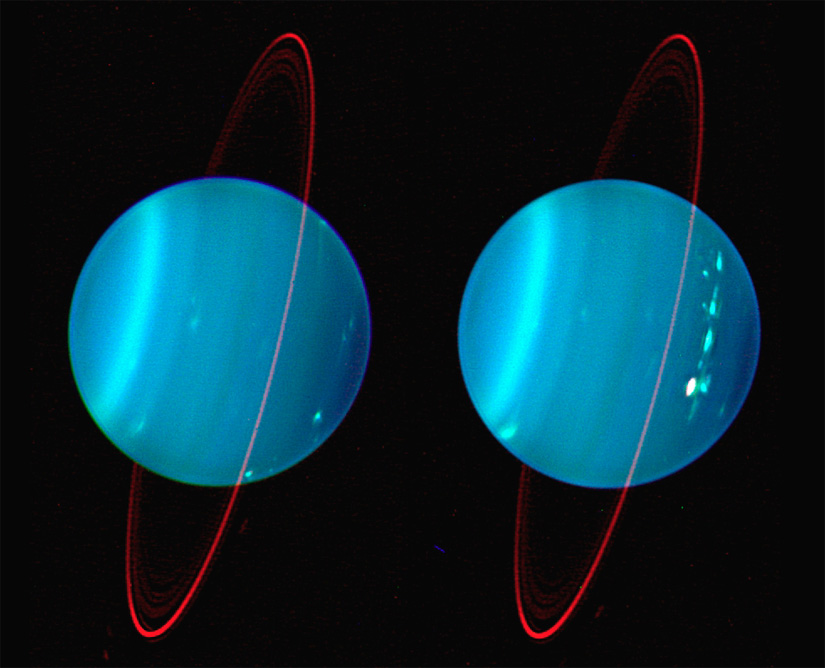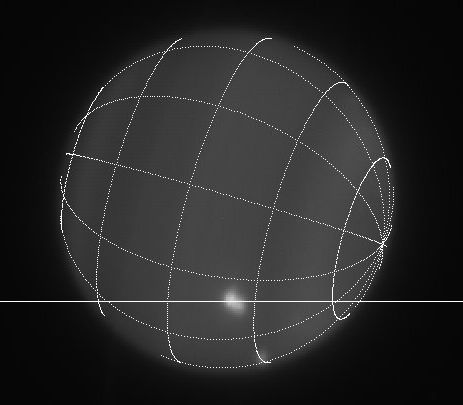There's nothing like a dynamic solar system... and right now another planet is being heard from. According to various sources, a bright spot - possibly a developing storm - has been spotted on Uranus.
"Professional observers this morning (October 27) reported a very bright cloud on Uranus, using the Gemini telescope, and need amateur confirmation if possible, to obtain a rotation period." says John H. Rogers, Jupiter Section Director, British Astronomical Association. "Near-infrared filters may have the best chance of detecting it. It was recorded in the 1.6 micron band, which is further into the IR than amateurs can reach, but your usual near-IR filters might be successful. I think that methane filters are not especially promising, as these clouds on Uranus are overlaid by a methane-rich layer of atmosphere, but would be worth trying anyway. Anyone who has a 1-micron filter should have a go too."
At this point in time, information is limited, but professional images taken using the 8.1-metre Gemini Telescope North on Hawaii have recorded a region said to be ten times brighter than the planetary background. The bright spot is believed to be attributed to methane ice. ""This is an H-band image, centered at 1.6 microns, close to the wavelength of maximum contrast for such features. Its contrast will decrease with decreasing wavelength, and will likely not be detectable by amateur astronomers, except possibly at the longer CCD wavelengths where the Rayleigh scattering background can be suppressed." says Larry Sromovsky, of the University of Wisconsin-Madison. "Looking with a methane band filters at 890 nm might be productive, especially if the feature continues to brighten."

Dr Sromovsky added: "The latitude of the feature is approximately 22.5° north planetocentric, which is a latitude nearly at rest with respect to the interior. So it should rotate around Uranus' axis with nearly a 17.24-hour period. At the time of the image, the feature's longitude was 351° West. That could change slowly in either direction.
"The low latitude is unusual. Previous exceptionally bright cloud features on Uranus were at close to 30° North, both in 1998 (Sromovsky et al. 2000, Icarus 146, 307-311) and in 2005 (Sromovsky et al. 2007, Icarus 192, 558-575). The 2005 feature oscillated ±1° about its mean latitude. The new feature might also oscillate in latitude, in which case its longitudinal drift rate might also vary with time."
Hang in there, UT readers! Right now we have two of our best astrophotographers doing their best to give us an exclusive look! This page will be updated as more information becomes available.
Partial Quote Source: Skymania News Release.




Reader Comments
to our Newsletter